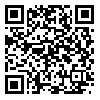BibTeX | RIS | EndNote | Medlars | ProCite | Reference Manager | RefWorks
Send citation to:
URL: http://jmb.ahvaz.iau.ir/article-1-605-en.html
The purpose of this research was to investigate changes of nutritional compounds and fatty acids in peeled undeveined white leg shrimp (PUD) (Litopenaeusvannamei) at -18°C. In October 2014, 12 kilograms of this species were randomly collected from Rig, Dayer and Delvar pools in Bushehr province and stored as pleaded undeveined shrimp (PUD) at -18°C for 6 months. The Factors investigated were moisture, ash, fat, protein, TVN index, peroxide, fatty acids and their rate of changes during the freezing period. All of these factors were measured with related standard methods. The results in the fresh shrimp tissue showed that the amounts of moisture, ash, fat, protein, TVN and peroxide were: 72.93%, 1.22%, 0.95%, 24.8% and 1.53 (meq/kg) and 12.4 (mg/100), respectively. In this species 32 fatty acids were identified and polyunsaturated fatty acids (PUFAs) had the highest amount with 45.25%. In the end of the six-month period, the amounts of moisture, ash, fat, protein, peroxide and TVN index were 66/89%, 1/69%, 0/31%, 25/22%, 2/75(meq/kg) and 31/62 (mg/100), respectively in PUD shrimp muscle and the level of PUFAs decreased to 41.66%. Based on Duncan's statistical test all of the mentioned factors showed a significant difference in the sixth month compared to the zero day (p<0.05). Due to the decrease of nutritional value in beneficial fatty acids and the increase in the spoilage indices especially TVN indices that were more than the maximum level it can be said that the best time for using PUD vanammei shrimp as a most common preservation method is up to 3 months.
Received: 2017/12/17 | Accepted: 2017/12/17 | Published: 2017/12/17
| Rights and permissions | |
 |
This work is licensed under a Creative Commons Attribution-NonCommercial 4.0 International License. |



